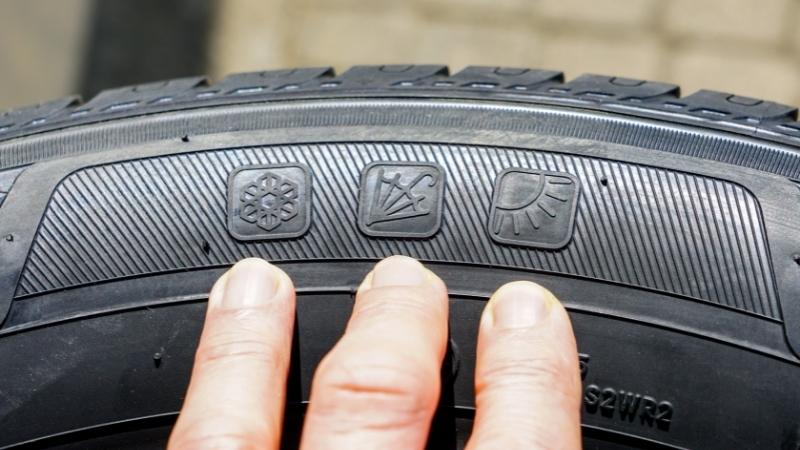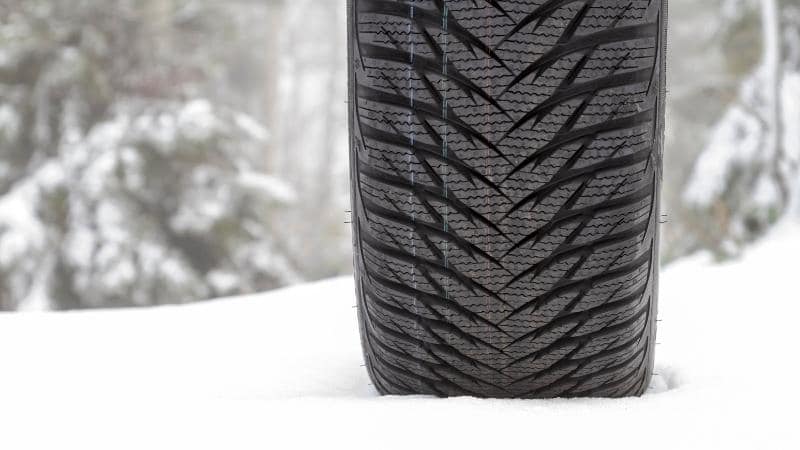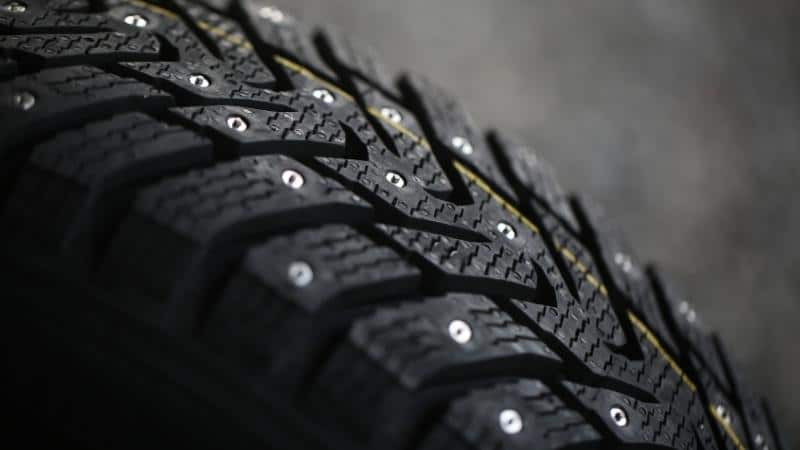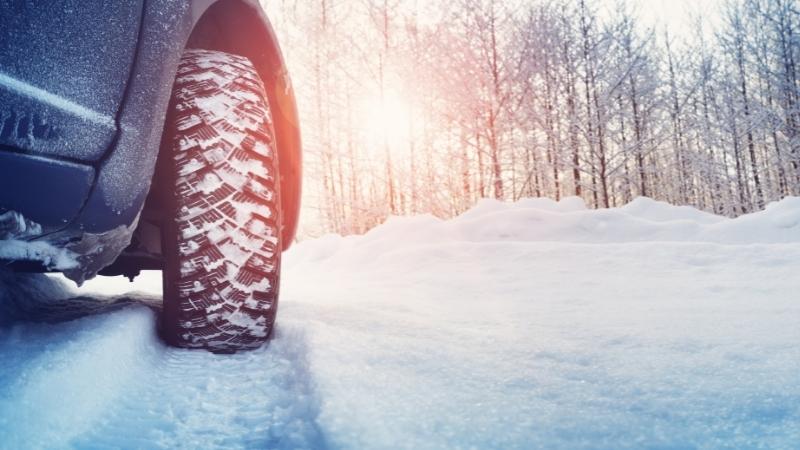Winter is approaching and the days are getting chillier. At this time of year a lot of people wonder if they can use all-season tires throughout the entire winter.
Whether or not you should use all-season tires during the winter depends on your winter driving conditions. Most all-season tires aren’t suitable for sub zero, snowy winter conditions because the rubber hardens too much, reducing traction with the road. However, special mud & snow (M+S) all-season tires can be used during sub zero conditions.
Read on to learn more about when it’s applicable to use all-season tires as well as some of the differences between all-season tires and winter tires and when to choose which.
What Are All-Season Tires?
It’s confusing since when you hear the term all-season tires, you think the tires are made for all types of weather, right?
Not really.
All-season tires provide maximum performance during summer, spring, and fall. Currently, most tire companies have started renaming all-season tires as 3-season tires. This means that the tire is not suitable for sub-zero, snowy winter conditions. All-season tires seem to lose grip when exposed to low temperatures of about 7 degrees Celsius.

All-season tires feature smooth and straight treads that repel water as you drive in the rain. They also offer a better grip on the road during warm or hot conditions.
Snow and mud tires are special all-season tires designed for snowy and muddy conditions. They feature a unique mark “M+S” on the sides of the tire.
What Are Winter Tires?
Most of us living in the north have faced white-knuckle drives in a winter wonderland, after the road is fully coated with a fresh dump of snow. Winter tires come to your rescue in such a terrifying situation and provide you with real peace of mind.
Featuring big blocky treads, winter tires move water and slush more efficiently. These tires also come with a soft rubber that makes them flexible in cold temperatures. This is different in hot temperatures as the softness becomes a burden; hence you need to swap out winter tires for all-season or summer tires in such conditions.

The most significant disadvantage of winter tires is the extra storage costs and the burden of putting them on and taking them off at the right season of the year. Not everybody has additional storage space for four bulky tires, which is why all-weather tires are the best choice.
However, if you reside in an area where the temperatures are low, the plow trucks are few, and the snow is deep, then winter tires will work best for you.
Differences Between All-Season Tires And Winter Tires
1. Tread Depth
Tread depth is the most outstanding feature in most vehicle tires. It is usually between 9/32 and 12/32s in new summer, winter, and all-season tires. The deeper the tread, the better traction it offers in soft conditions such as mud or unpacked snow.
However, a too deep tread can lead to tread squirm on a hard surface. A tire with a 4/32 tread depth will offer a safe and smooth ride on the ice, packed snow, or in the rain.
It is worth noting that if your tread depth reaches 4/32, you should replace such tires.
2. Siping Differences
Tire siping enhances traction on slippery pavements like snow, rain, and ice. Each sipe on a tire provides a biting edge for traction. And all-season tires seem to provide less siping than winter tires.
However, siping improves tread squirm and reduces handling ability due to increased flexibility from the siping. Some all-season tires come with a harder tread compound that reduces distortion though they have more siping.
A good winter tire is designed with a balanced siping and tread compound that makes it excel in snow, ice, and rain.
3. Studs

Studs are a choice that one can make on some all-season and winter tires. Studs increase traction on ice and a little on snow.
In North America, you will find two types of winter tires in the market: studded and studless. Studless winter tires are more pliable than studded winter tires. This is because you need a hard tread compound to maintain the studs in place.
Studded winter tires perform well with studs, although a studdable winter tire without studs may not perform well like a studless winter tire made of a soft compound.
4. Winter Tire Life/Tire Wear
All-season tires are designed to work all year round in all conditions (just not quite as well at sub zero) hence the name “all-season tires .”
On the other hand, winter tires are designed for use only during the winter. This means they should come off the vehicle and go into storage in other seasons. You will experience three seasons out of your winter tires as a daily driver. This may not result from tread hardening or age but due to tread wear from regular driving.
When re-installing your winter tires, maybe after summer, request your mechanic to check if the tread depth is less than 5/32s.
If yes, you should purchase new winter tires before the end of the season and end up saving some coins on the mounting and balancing work instead of paying twice (once for installing the old tires and again when installing new tires later within the season).
5. Tire Pressures
Tire pressure is the same in winter, and all-season tires of the same size on the same car. The recommended tire pressure is indicated on the car’s placard found in the driver door jam.
6. Ride Comfort
The ride comfort is greatly influenced by the tire carcass construction and tread component. Winter tires are constructed and designed for winter attributes. Having said that, there exists no significant difference between winter and all-season tire construction, although there are compound variations.
A studded winter tire will provide a bumpy ride since the studs directly contact the hard pavements. For a smooth riding experience in cold climates, a winter tire’s winter-specific compound would do miracles. However, a premium studless winter tire will provide the smoothest riding experience in cold conditions.
Read next: Summer, Winter And All-Season Tires: What’s The Difference And Which to Use?
How Cold is Too Cold For All-Season Tires?
Most all-season tires are not constructed for use in climates with temperatures below freezing. Even at temperatures below 7 degrees Celsius (42 degrees Fahrenheit), the rubber in all-season tires will start to harden. The tire will still perform ok at such temperatures, though not with the same level of traction as experienced with dedicated winter tires.
Hi, my name is Niklas, the head content creator & CEO of Whirling Wheelz. I am very interested in vehicles of all kinds, mainly cars. I have a car mechanics degree from high school and a big hobby of mine is to follow the WRC (World Rally Championship) both online and through travel.


